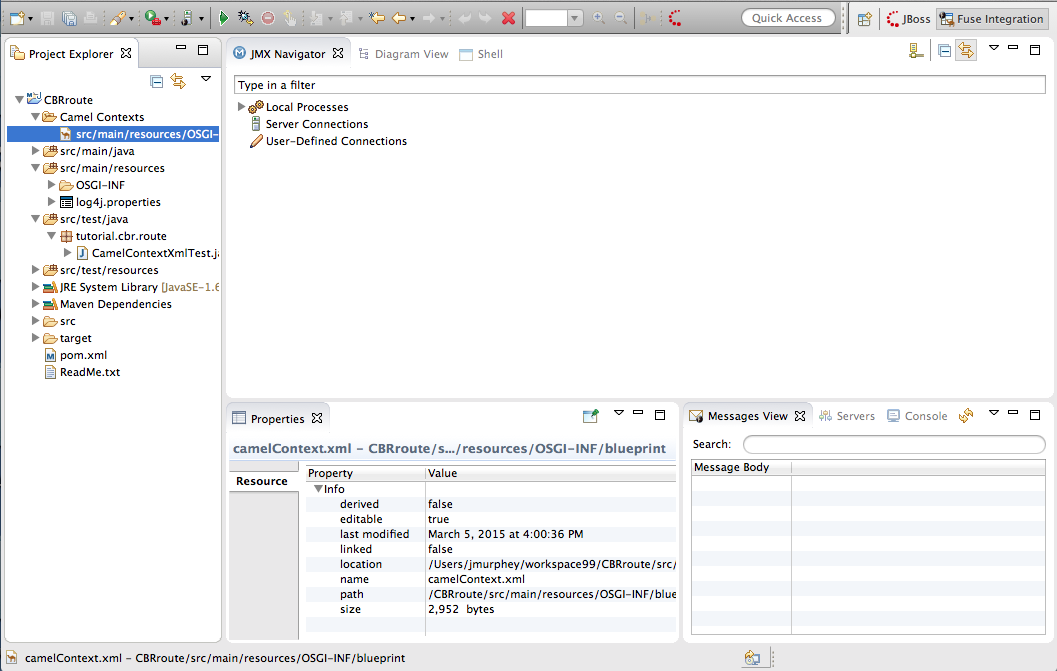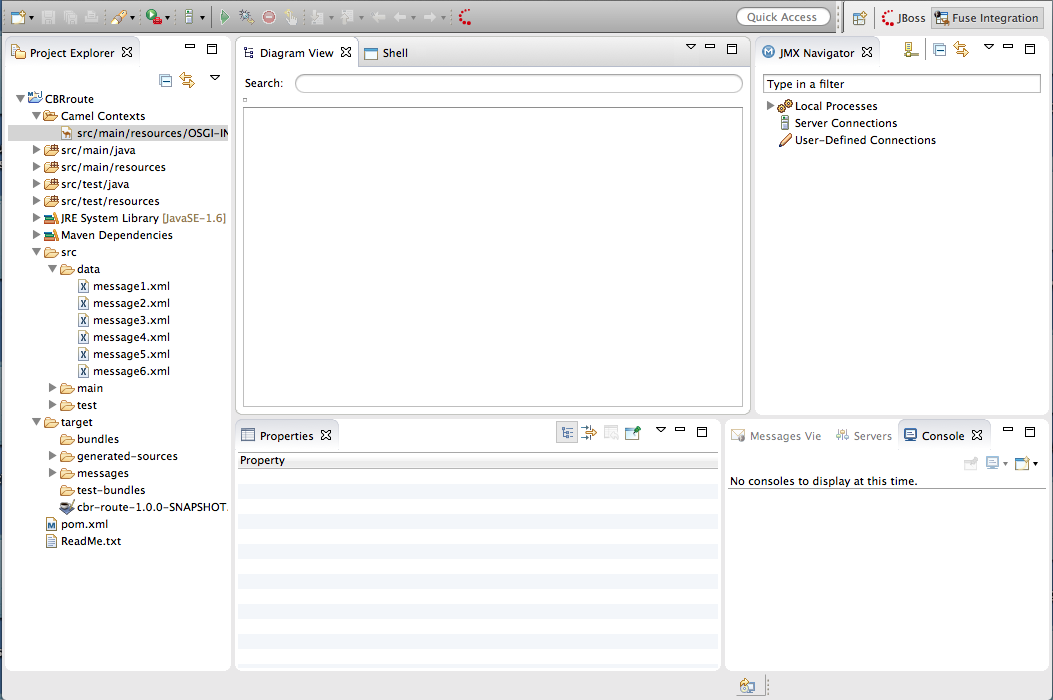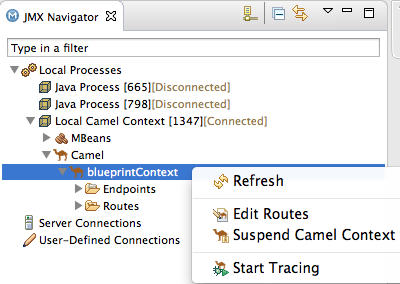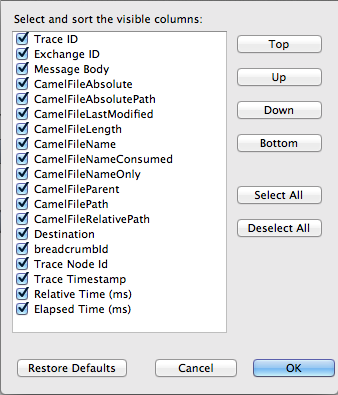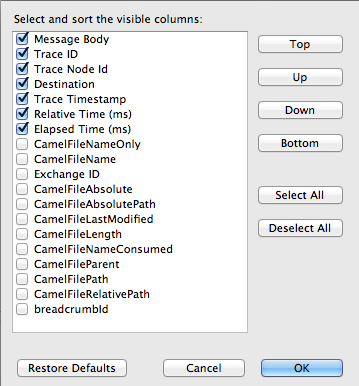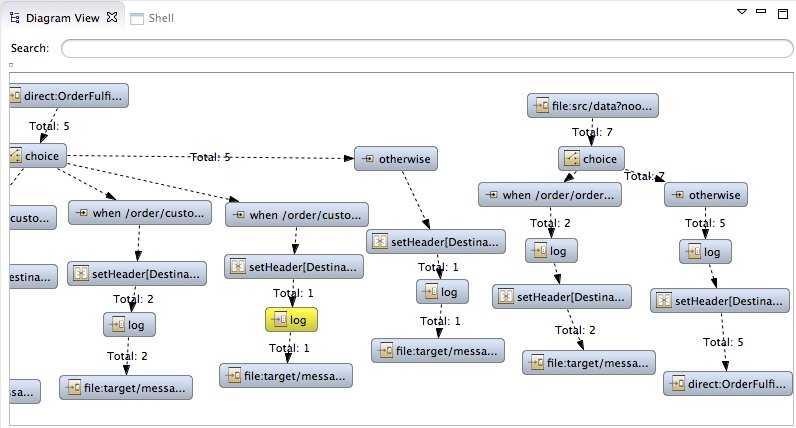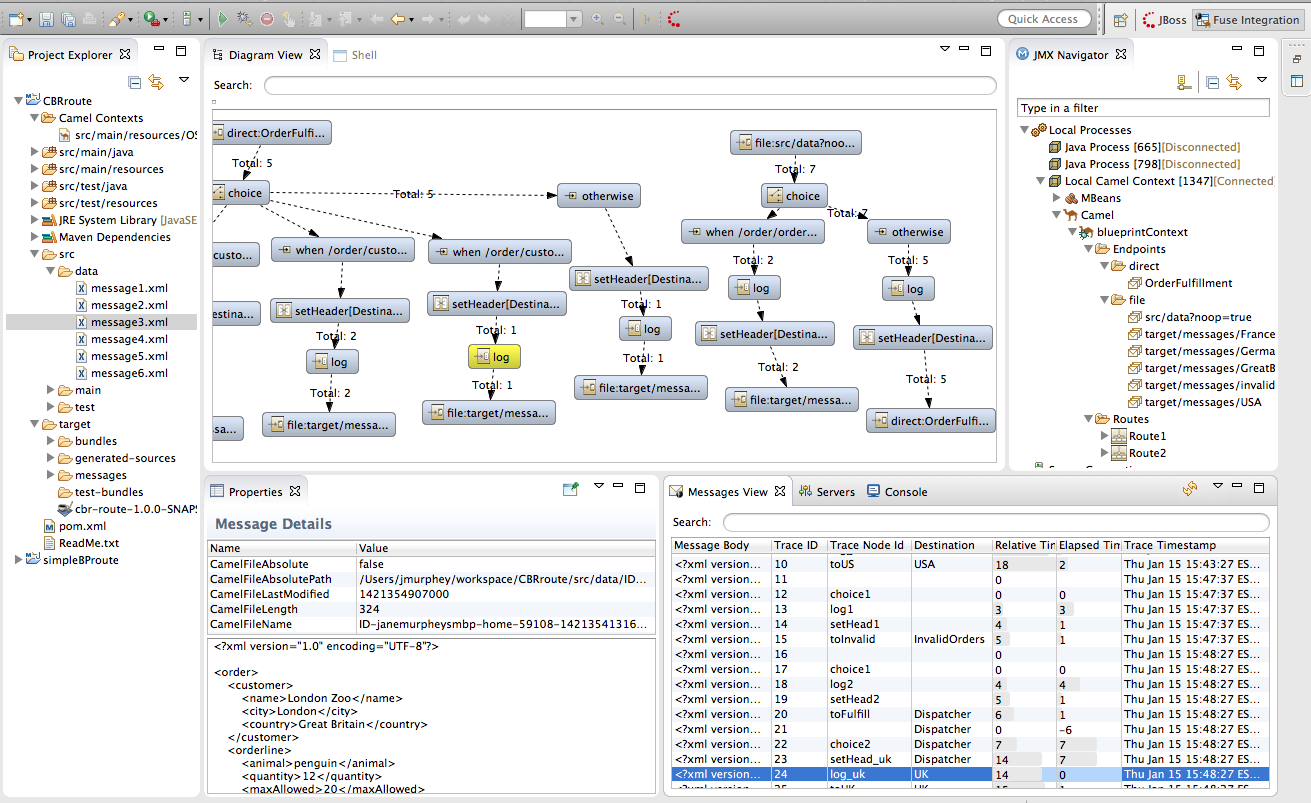Fuse 6 is no longer supported
As of February 2025, Red Hat Fuse 6 is no longer supported. If you are using Fuse 6, please upgrade to Red Hat build of Apache Camel.Chapter 7. To Trace a Message Through a Route
Abstract
Goals
- run the CBRroute in the Fuse Integration perspective
- enable tracing on the CBRroute
- drop messages onto the CBRroute and track them through all route nodes
Prerequisites
CBRroute project you updated in Chapter 5, To Add Another Route to the CBR Routing Context.
camelContext6.xml file to work through this tutorial (for details, see Chapter 1, Using the Fuse Tooling Resource Files).
Accessing Fuse Integration perspective
- NoteYou can use the Open Perspective icon (
 ) in the perspectives tab to access the list of available perspectives.
) in the perspectives tab to access the list of available perspectives.
Figure 7.1. Fuse Integration perspective
NoteTo make it easy to access a Camel Context.xmlfile, especially when a project consists of multiple contexts, the tooling lists them in theCamel Contextsfolder, beneath the project's root folder in Project Explorer; for example: - Drag the Diagram View tab and the Shell tab, located to the left of the JMX Navigator tab, and drop them to the right of the JMX Navigator tab, as shown in Figure 7.2.
Figure 7.2. Fuse Integration perspective rearranged
This layout will provide more space for Diagram View to display the route's nodes in a graphical representation, enabling you to visually trace the path that messages take in traversing the routing context.
Starting message tracing
- In Project Explorer, expand the
CBRrouteproject to expose thesrc/main/resources/OSGI-INF/blueprint/camelContext.xmlfile. - Select
from the camelContext.xmlfile's context menu. - In JMX Navigator, expand Local Processes.
- Double click
Local Camel Context[Id][Disconnected]to connect to it and expand the elements of your route, as shown in Figure 7.3, “Route elements in JMX Navigator”.Figure 7.3. Route elements in JMX Navigator
- Right-click the node to open the context menu, and select .The tooling displays a graphical representation of your route in Diagram View, as shown in Figure 7.4.
Figure 7.4. Routes' graphical representation
Dropping messages on the running CBRroute project
- In Project Explorer, expand
CBRroute/src/data, so you can access the message files (message1.xmlthroughmessage6.xml), as shown in Figure 7.5, “Message files in CBRroute project”.Figure 7.5. Message files in CBRroute project
- Drag
message1.xmland drop it on theblueprintContext>Endpoints>file>src/data?noop=truenode in JMX Navigator, as shown in Figure 7.6.Figure 7.6. Local Camel Context tree expanded to input source node
As the message traverses the route, the tooling traces and records its passage at each step. To update Diagram View with the new message count, you need to click theblueprintContextnode in JMX Navigator.NoteTheLocal Camel Context[xxx]tree collapses to theblueprintContextnode after you drop the next message on the input src node. You need not re-expand it. When dragging the other messages, hover over each node in the tree to expose the next node, until you reach thesrc/data?noop=truenode. Then drop the message on it. This method prevents the tooling from redrawing the graphical representation in Diagram View.
Initializing and configuring Messages View
- Switch from Console to Messages View.
- Click the
blueprintContextnode in JMX Navigator to initialize Messages View withmessage1.xml's details.NoteYou can control columnar layout in all of the tooling's tables. Use the drag method to temporarily rearrange tabular format. For example, drag a column's border rule to expand or contract its width. To hide a column, totally contract its borders. Drag the column header to relocate a column within the table. For your arrangement to persist, you must use themethod instead. - In Messages View, click the
 icon on the panel's menu bar, and select to open the wizard, as shown in Figure 7.7.
icon on the panel's menu bar, and select to open the wizard, as shown in Figure 7.7.
Figure 7.7. Configure Columns defaults
NoteNotice that the message header,Destination, which you set for the messages in your routing context, appears in the list.You can include or exclude items from Messages View by selecting or deselecting them. You can rearrange the columnar order in which items appear in Messages View by highlighting individual, selected items and moving them up or down in the list. - In the Configure Columns wizard, select and order the items as shown in Figure 7.8.
Figure 7.8. Configure Columns set
These items and their order will persist in Messages View until you change them again.
Arranging Diagram View
Stepping through message traces
- In Messages View, click the
 (Refresh button) on top, right of the panel's menu bar to populate the view with
(Refresh button) on top, right of the panel's menu bar to populate the view with message1.xml's message traces.Each time you drop a message on the inputsrcnode in JMX Navigator, you need to refresh Messages View to populate it with the message traces. - Click one of the message traces to see more details about it in Properties view, as shown in Figure 7.9.
Figure 7.9. Message trace selected
The tooling displays the details about a message trace (including message headers when they are set) in the top half of the Properties panel and the contents of the message instance in the bottom half of the Properties panel. So, if your application sets headers at any step within a route, you can check the Message Details to see whether they were set as expected.You can step through the message instances by highlighting each one to see how a particular message traversed the route and whether it was processed as expected at each step in the route.In Diagram View, the associated step in the route is highlighted, as shown in Figure 7.10.Figure 7.10. Diagram View: message trace node
Finishing up
- Drag
message2.xmland drop it on theblueprintContext>Endpoints>file>src/data?noop=truenode in JMX Navigator.Hover over each node in the tree until you expose thesrc/data?noop=truenode, then dropmessage2.xmlon it. - Switch from Console to Messages View.
- In Messages View, click the
 (Refresh button) on top, right of the panel's menu bar to populate the view with
(Refresh button) on top, right of the panel's menu bar to populate the view with message2.xml's message traces.NoteAs shown in Figure 7.11, the tooling draws the route in Diagram View, tagging paths exiting a processing step with timing and performance metrics (in milliseconds). Only the metric Total exchanges is displayed in the diagram.Figure 7.11. Fuse Integration perspective's message tracing components
Hovering over the displayed metrics reveals additional metrics about message flow, as shown in Figure 7.12.Figure 7.12. Additional message metrics
- mean time the step took to process a message
- maximum time the step took to process a message
- minimum time the step took to process a message
- When done:
- In JMX Navigator, right-click and select from the context menu.
- Open the Console and click the
 button in the upper right of the panel to stop the Console. Then click the
button in the upper right of the panel to stop the Console. Then click the
 button to clear console output.
button to clear console output.
